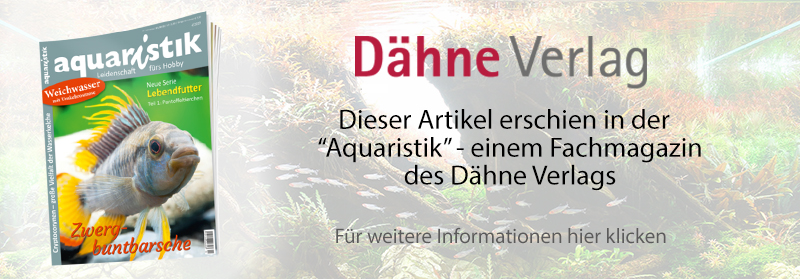Imposing fish for larger aquariums
Table of Contents
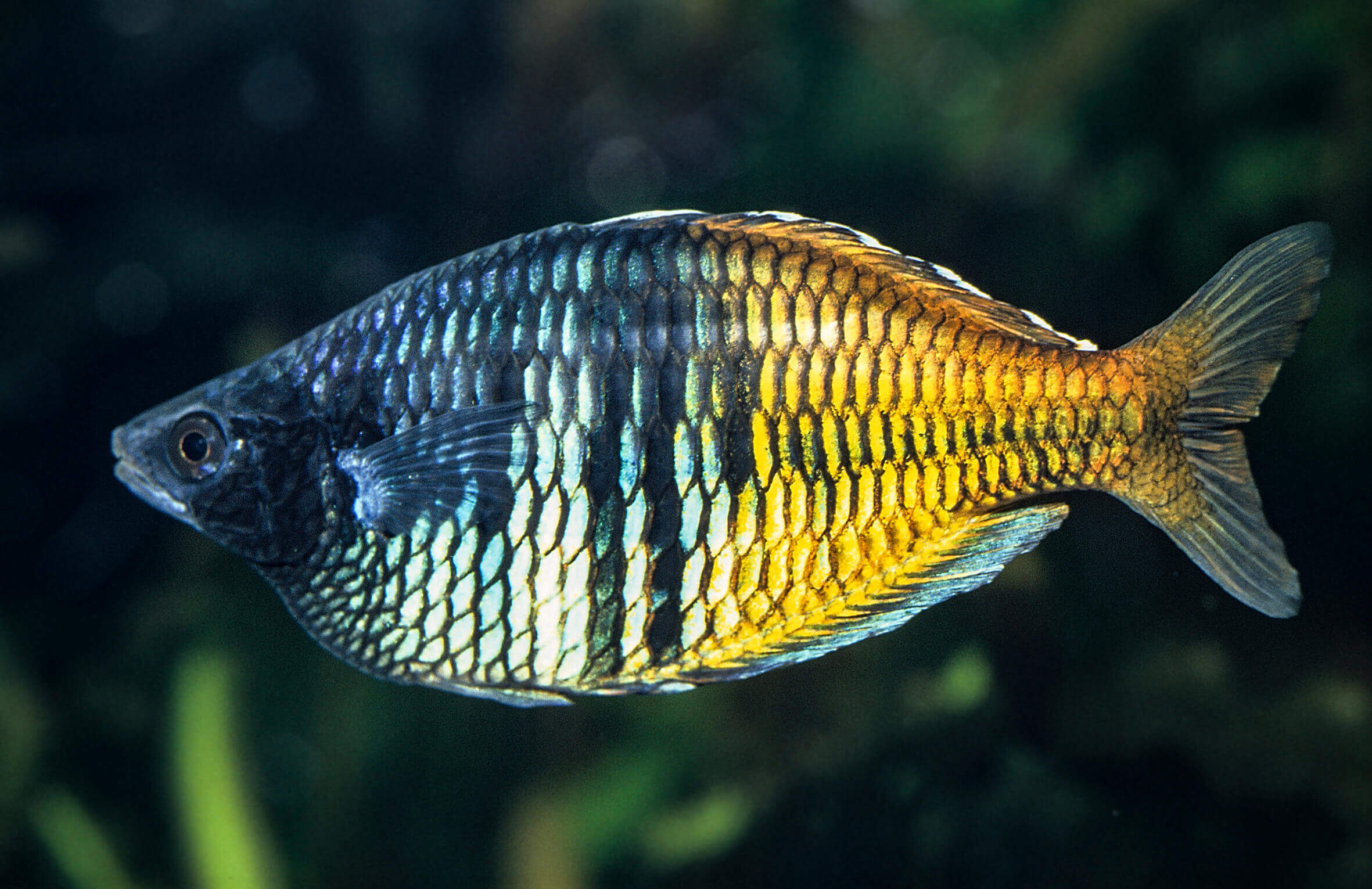
Still the best known rainbowfish is Melanotaenia boesemani.
Rainbowfish for larger aquariums
The Harlequin Rainbowfish and other representatives of this fish family we want to show you here. After the presentation of smaller rainbowfish species in aquaristik 3-2021, this article will deal with species that grow somewhat larger. In particular I would like to introduce some species which are less known. But first the best known rainbowfish at all: Boeseman's rainbowfish Melanotaenia boesemani (also harlequin, splendid and coral rainbowfish).
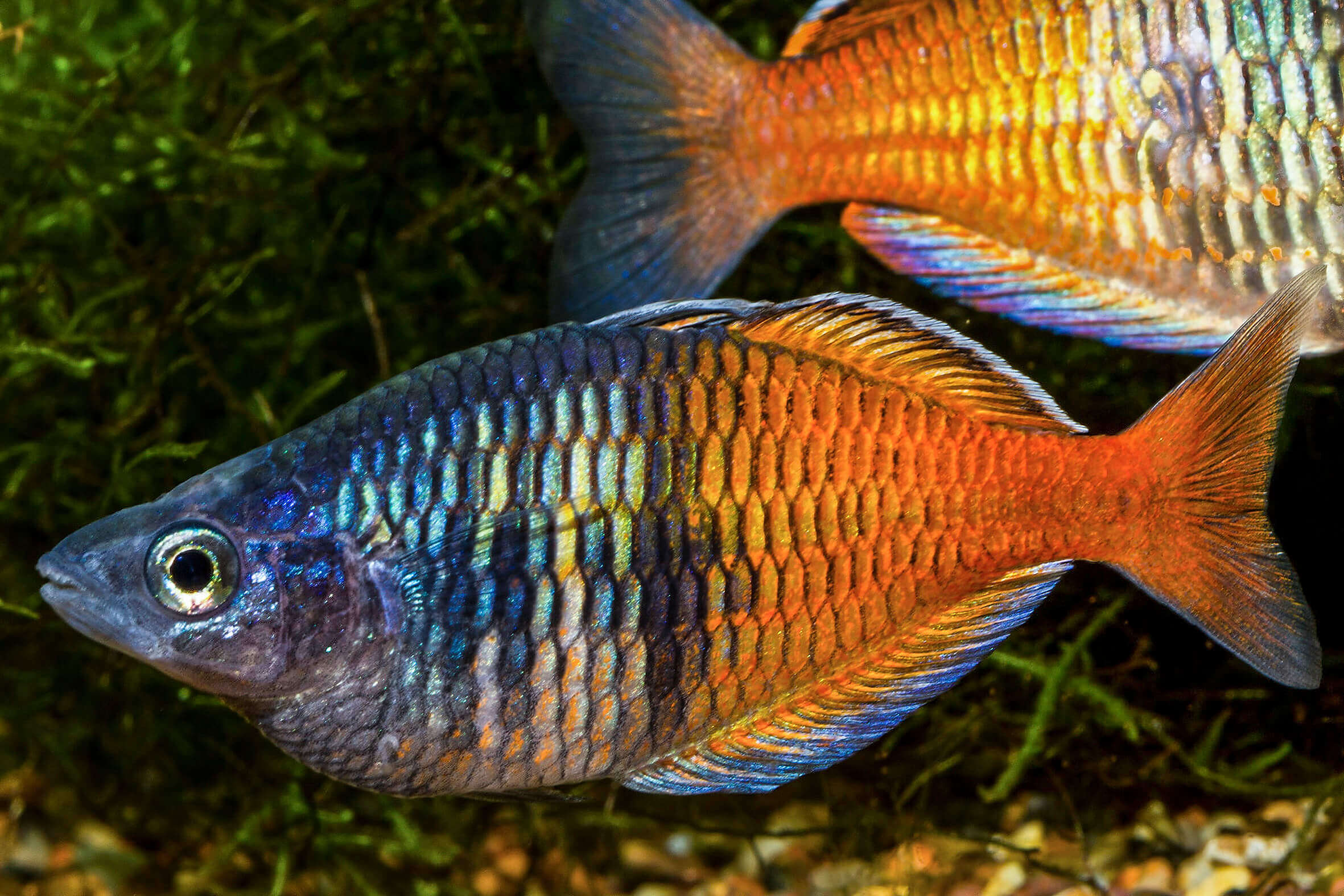
Rainbowfish is Melanotaenia boesemani "Lake Uter"
This species is native to Lake Ayamaru and several nearby lakes and waterways in the central Vogelkop area, a peninsula in western New Guinea. They all have in common the division of body colors into an orange front half and a blue back half. After mainly wild catches were imported from Ayamaru in the 1980s, today only aquacultured animals are on the market, produced in large quantities on an almost industrial scale and of rather moderate quality.
However, in the hands of enthusiasts are several forms of defined origin, which differ in color and body size. Some examples: The form from Lake Ajtinio (there are several spellings of this word) has a darker blue and tends to remain somewhat smaller than the Ayamaru form. The variant from the small river Kromsa is the smallest form of M. boesemani. Not to be undermentioned is the "standard variant" from Lake Ayamaru, of which F1 offspring of wild-caught specimens are currently being distributed in enthusiast circles. This form is still the most impressive of the M. boesemani forms.
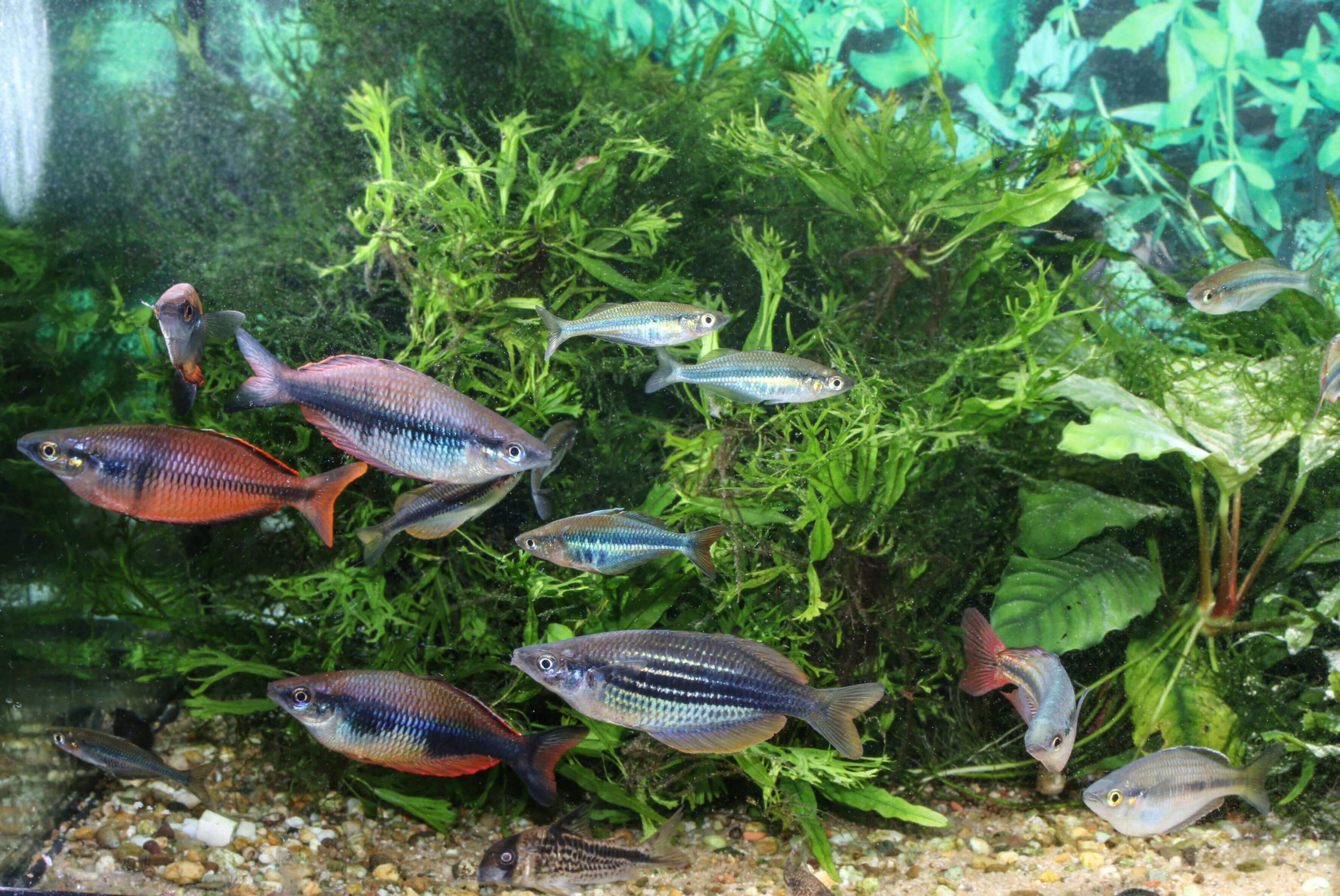
Rainbowfishes are good for socialization.
The Salmon Red Rainbowfish Glossolepis incisus originates from Lake Sentani in central West New Guinea and has been a well-known aquarium resident for years with dark red body color that turns bright bright red during courtship. Older males become easily quarrelsome as they occupy and defend a territory. This can be countered by keeping several of the same size in groups. Little known, but from the same genus, are G. multisquamata and G. dorityi. Both species take their time to fully develop, but are a feast for the eyes as adults.
The Tebera Rainbowfish (Melanotaenia herbertaxelrodi) from Lake Tebera in the mountains of Papua New Guinea is a symphony of yellow with markings of black and red in good quality animals. Unfortunately, animals from the trade are usually of poor quality. Here it is important to keep your eyes open for animals from breeders and to look at the parents.
The Jewel Rainbowfish(Melanotaenia trifasciata, also Banded R.) originates from Australia and is known in more than 30 different forms. The best known are certainly "Goyder River" in red-black and the similar, usually somewhat smaller remaining "Blyth River".
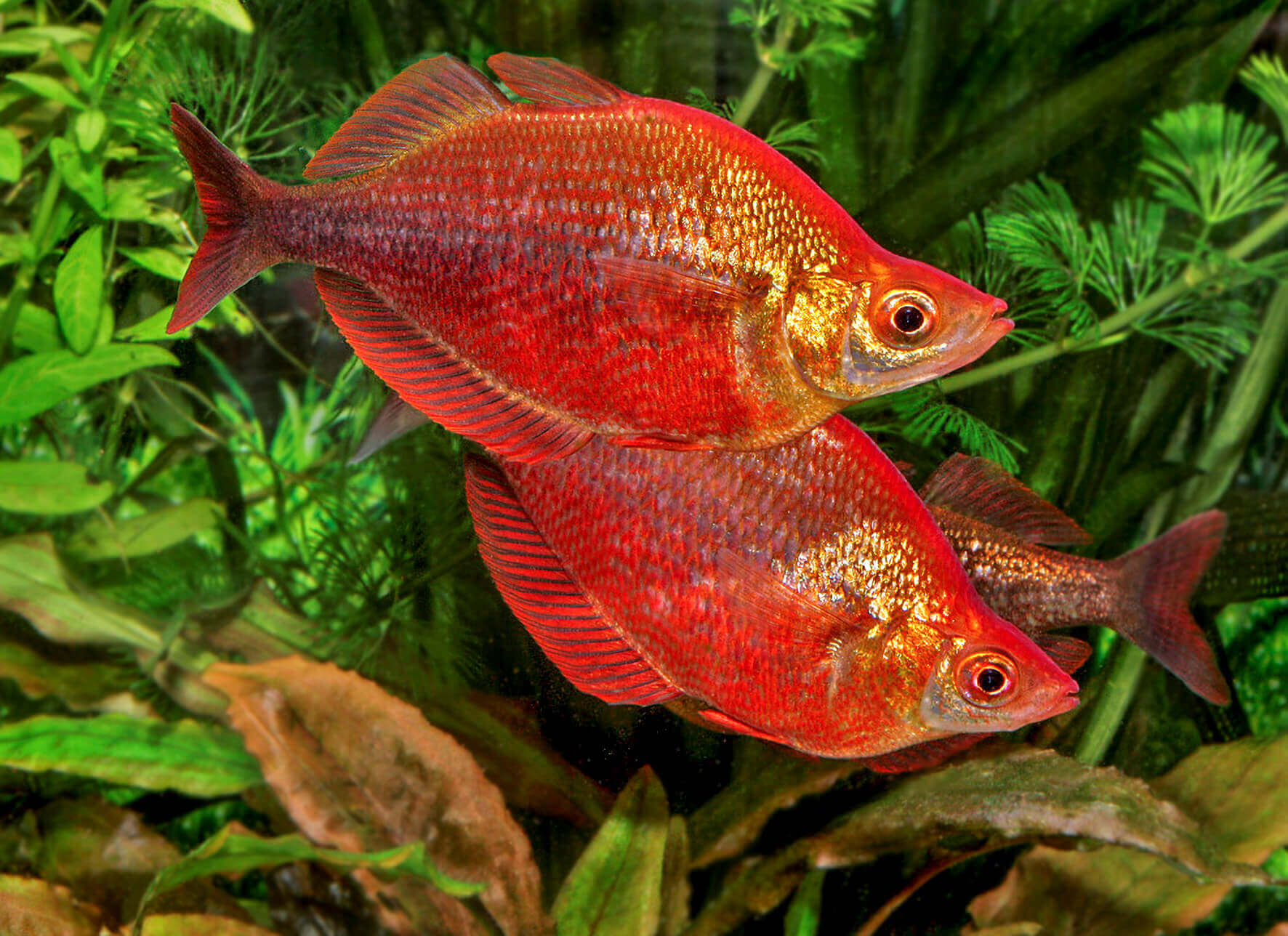 The Salmon Red Rainbowfish turns a bright bright red during courtship. Photo: Hristo Hristov
The Salmon Red Rainbowfish turns a bright bright red during courtship. Photo: Hristo Hristov
Really an insider tip
The counterpart to M. trifasciata from Western New Guinea is the Goldie River Rainbowfish(Melanotaenia goldiei). Actually these animals look like M. trifasciata (or vice versa), only one comes from Australia and the other from the southern half of West New Guinea. Again, there is a great abundance of locality forms. For me without doubt the form "Dekai Village", which comes from the surroundings of the village Dekai at the upper reaches of the Brazza River, is the most colorful and impressive species. Adult animals can become quite 12 cm long and captivate by a metallic light blue body and red-yellow fins. "Dekai Village" is really an insider tip for larger aquariums.
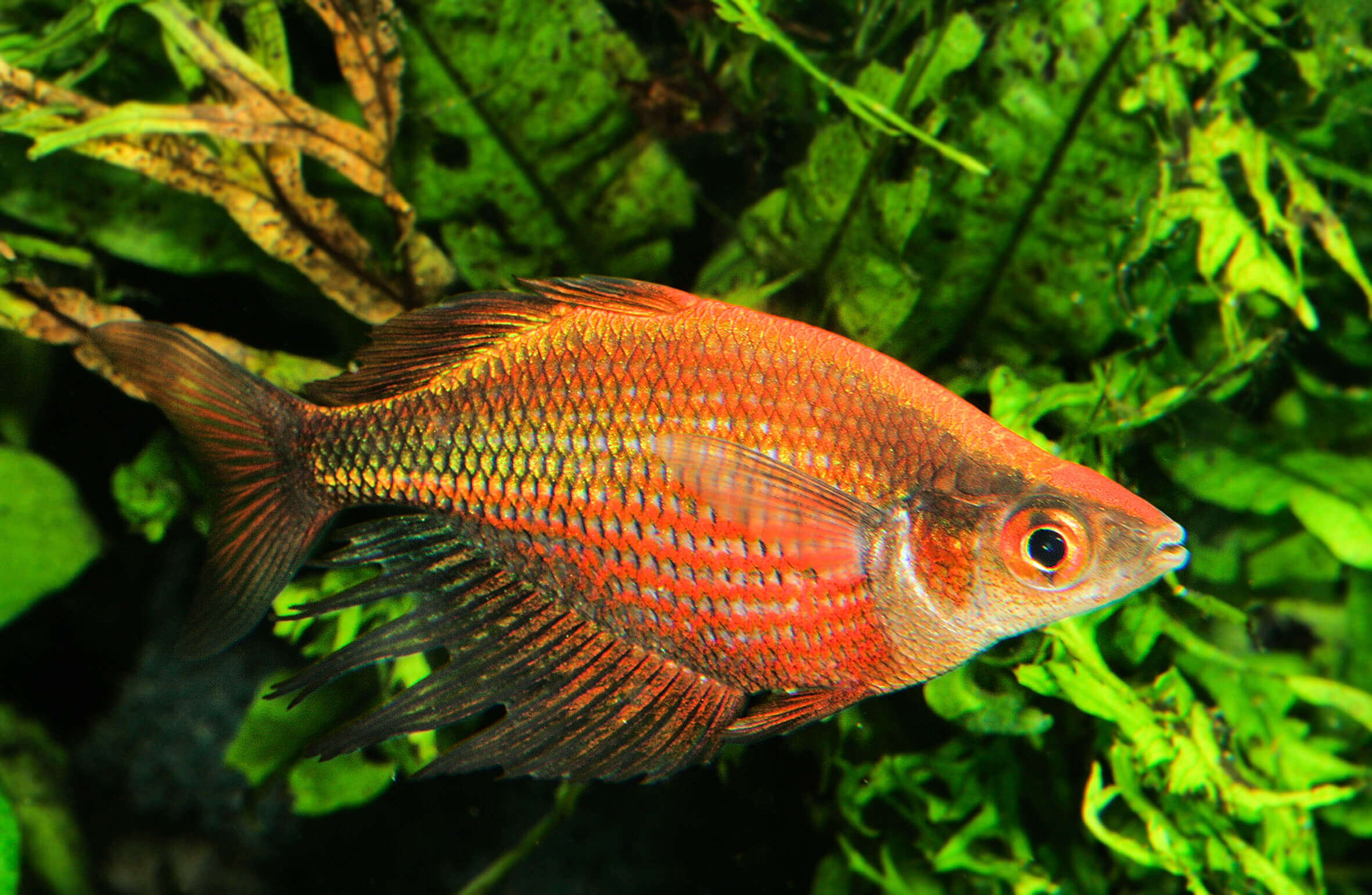 Less known is Glossolepis multisquamata, but as adult animals a feast for the eyes.
Less known is Glossolepis multisquamata, but as adult animals a feast for the eyes.
Rather medium in size is Allen's Rainbowfish Chilatherina alleni, which has done very well as an aquarium fish in recent years. Adults measure no more than 8 inches, making this species suitable for not-so-large aquariums. 100 to 150 liters volume can be sufficient for a group. The two local forms "Wapoga River" and "Siriwo River" do not give each other anything in color richness. The former has predominantly red and orange tones, while the latter changes more into yellow-green.
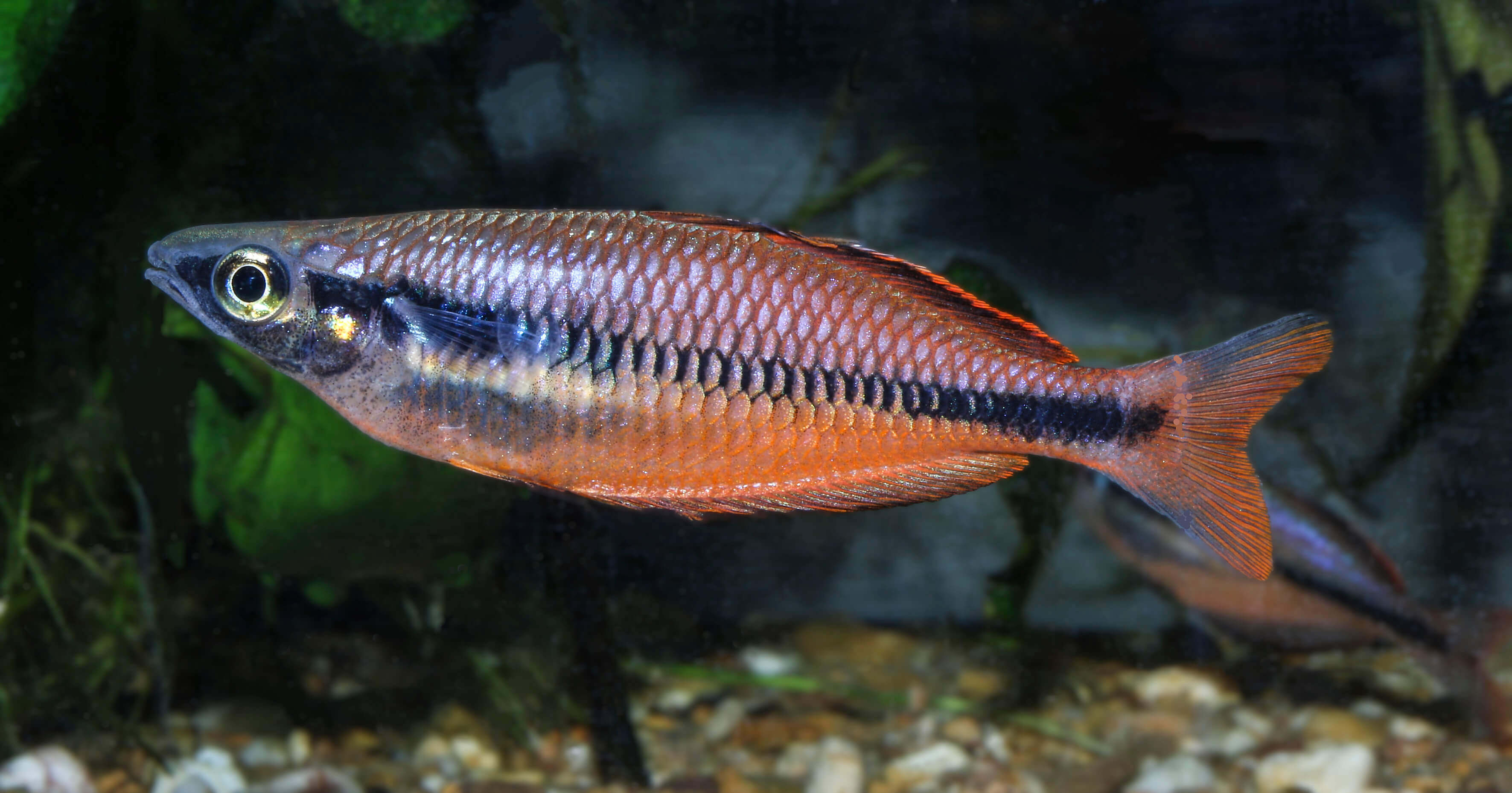
Melanotaenia susii is found only in a three-kilometer stretch of a single stream.
From the south of the Vogelkop Peninsula comes a varied group of rainbowfishes. New forms are still being discovered. All of them are medium sized rainbowfish (8-10 cm), easy to keep and with attractive colors. Examples are "Kali Merah" ("Kali" is the Indonesian word for stream) with bright red markings, "Kali Moysi" with contrasting black and red tail fin and "Meyado Village" with deep black tail fin. "Kali Tabaga", on the other hand, is predominantly yellow in color, although the locality is only a few kilometers from "Kali Moysi".
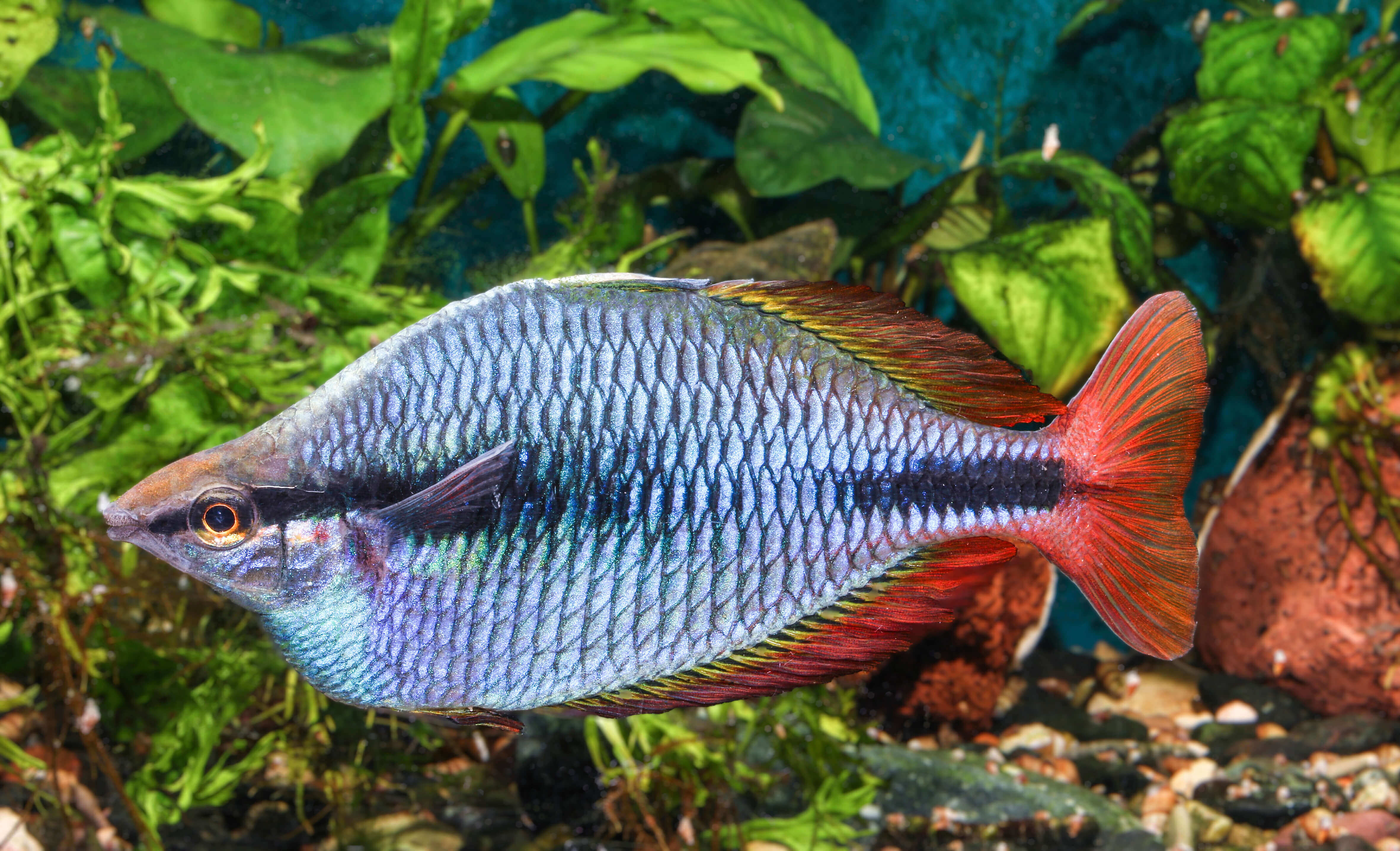 The form "Dekai Village" of M. goldieiis for me the most colorful species.
The form "Dekai Village" of M. goldieiis for me the most colorful species.
Melanotaenia susii
grows about 12 cm long and shines in a glowing magenta during courtship in the morning. This color fades over the day and comes back a little bit weaker in the evening, when the animals do their display again. M. susii has only a tiny occurrence area: a only about 3 km long stream in the karst mountains of Vogelkop. The stream emerges from underground, flows above ground for about three kilometers, and then disappears underground again. No one knows where it ends.
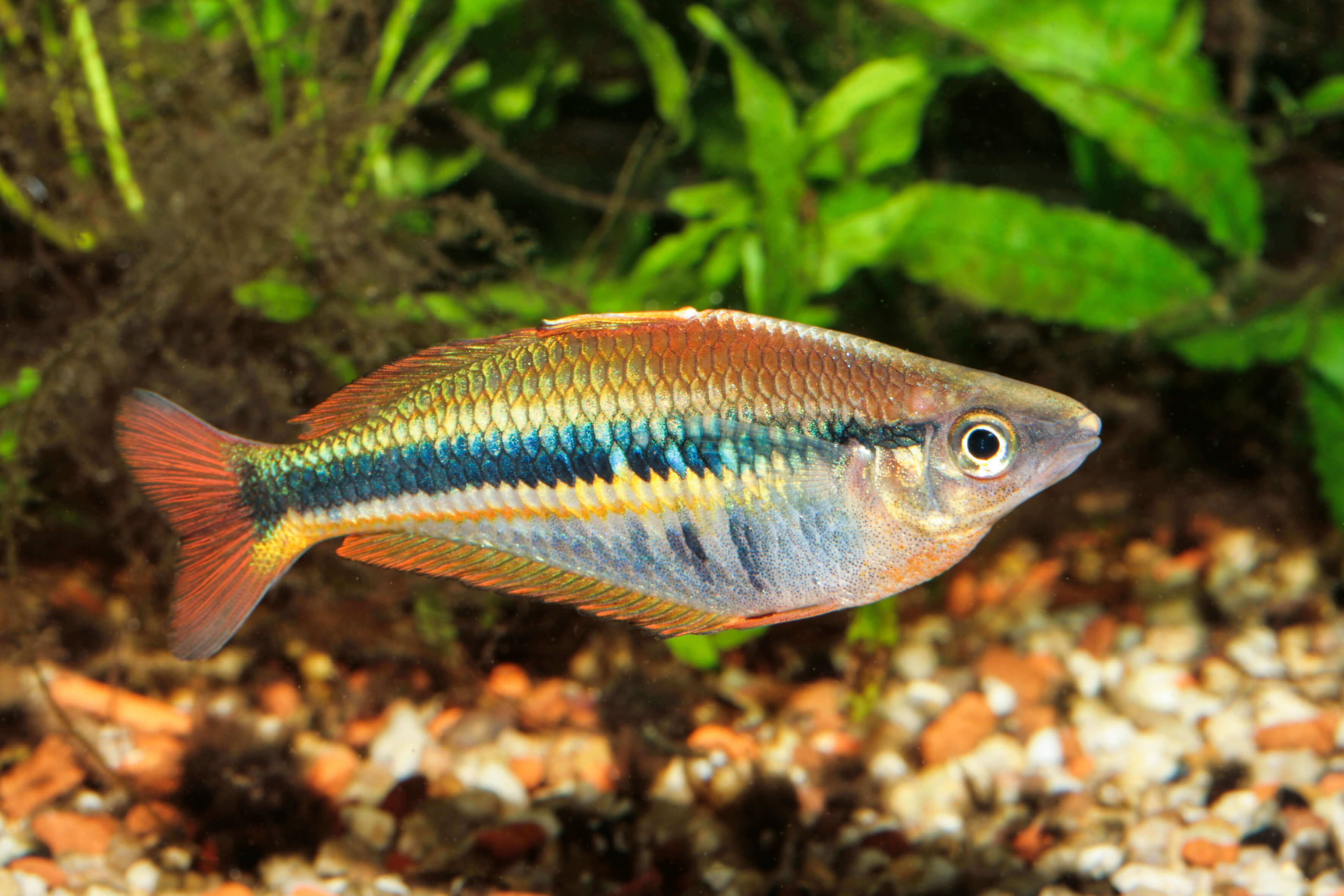
Allen's rainbowfish in the "Wapoga River" locality form
Melanotaenia splendida (Red-striped or Large-finned Rainbowfish) is a richly shaped species from Australia. A very nice representative comes from the village "Tarzali" in the Atherton Tablelands. Blue iridescent and with red patterned fins, this species grows to medium size (about 8 cm), is easy to keep and colorful all day.
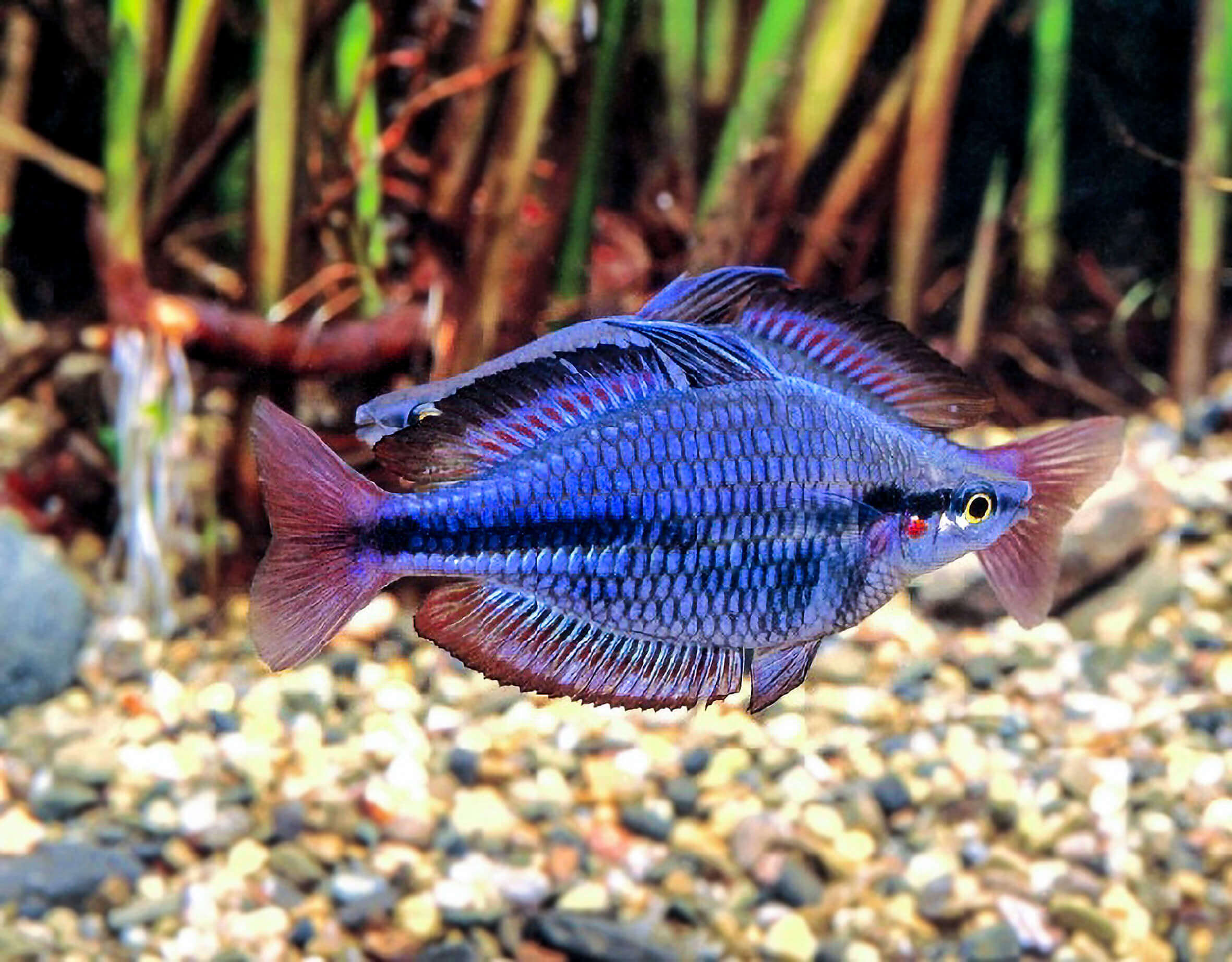
Mainly blue shades shows M. trifasciata "Cato River".
A real eye-catcher
Melanotaenia ammeri is a species known since several years. However, the animals available in the hobby so far could only arouse the enthusiasm of a few specialists. This could change now, because the recently introduced form "Lengguru" (also called M. spec. "Lengguru") is rich in contrast and iridescent in all colors, bordered by yellow fins. A real eye-catcher, peaceful and easy to keep.
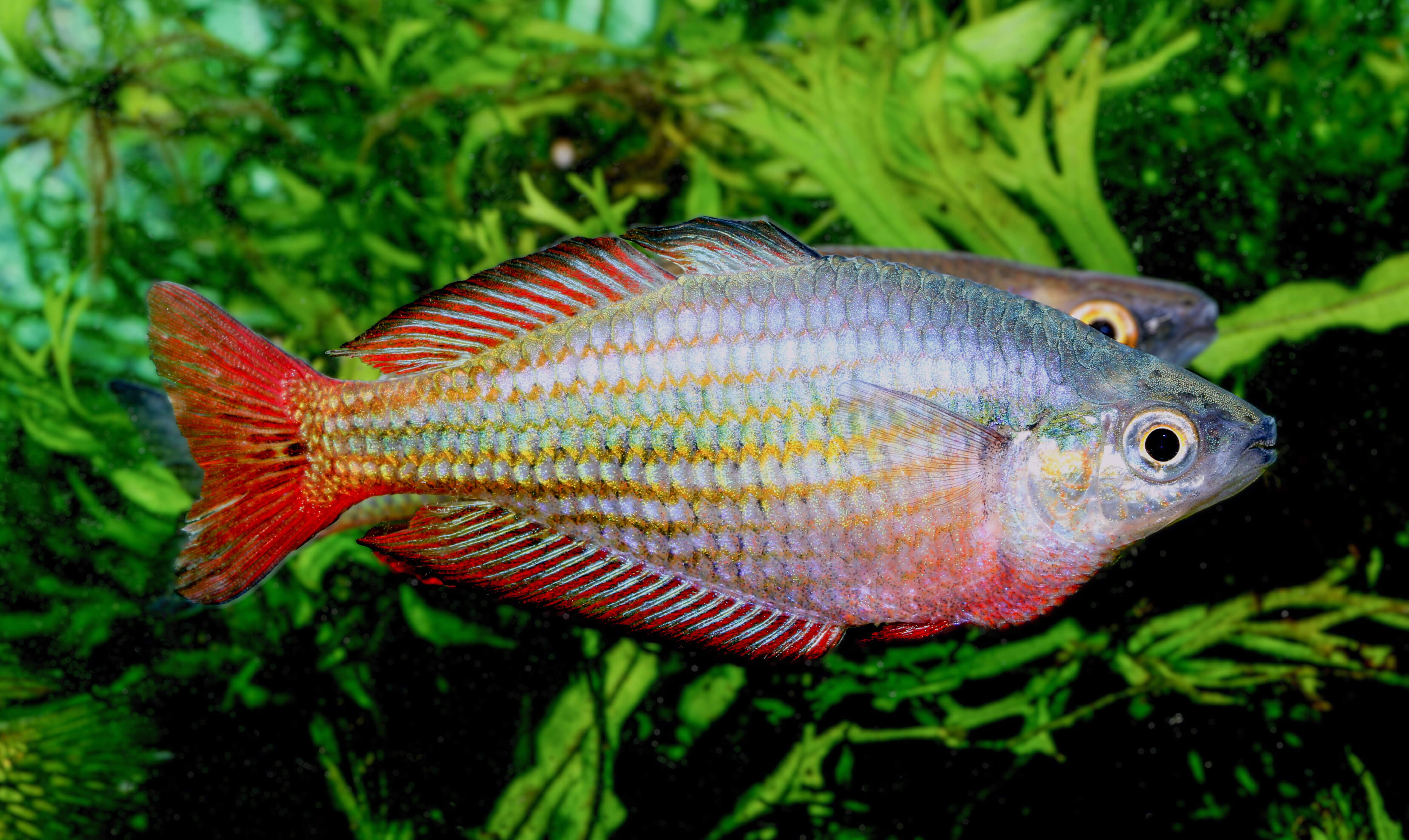 The variant "Tarzali" of the large fin rainbowfish from Australia is easy to keep.
The variant "Tarzali" of the large fin rainbowfish from Australia is easy to keep.
Melanotaenia rubrostriata "Kavor Village" is something completely different. The high-backed animals with huge, sail-like fins shimmer orange-red and have white fin edges. These animals need some space to develop well, but are completely peaceful and can be socialized very well with rainbowfish or other, also peaceful fish species. In no case should they be socialized with animals that tug at their fins.
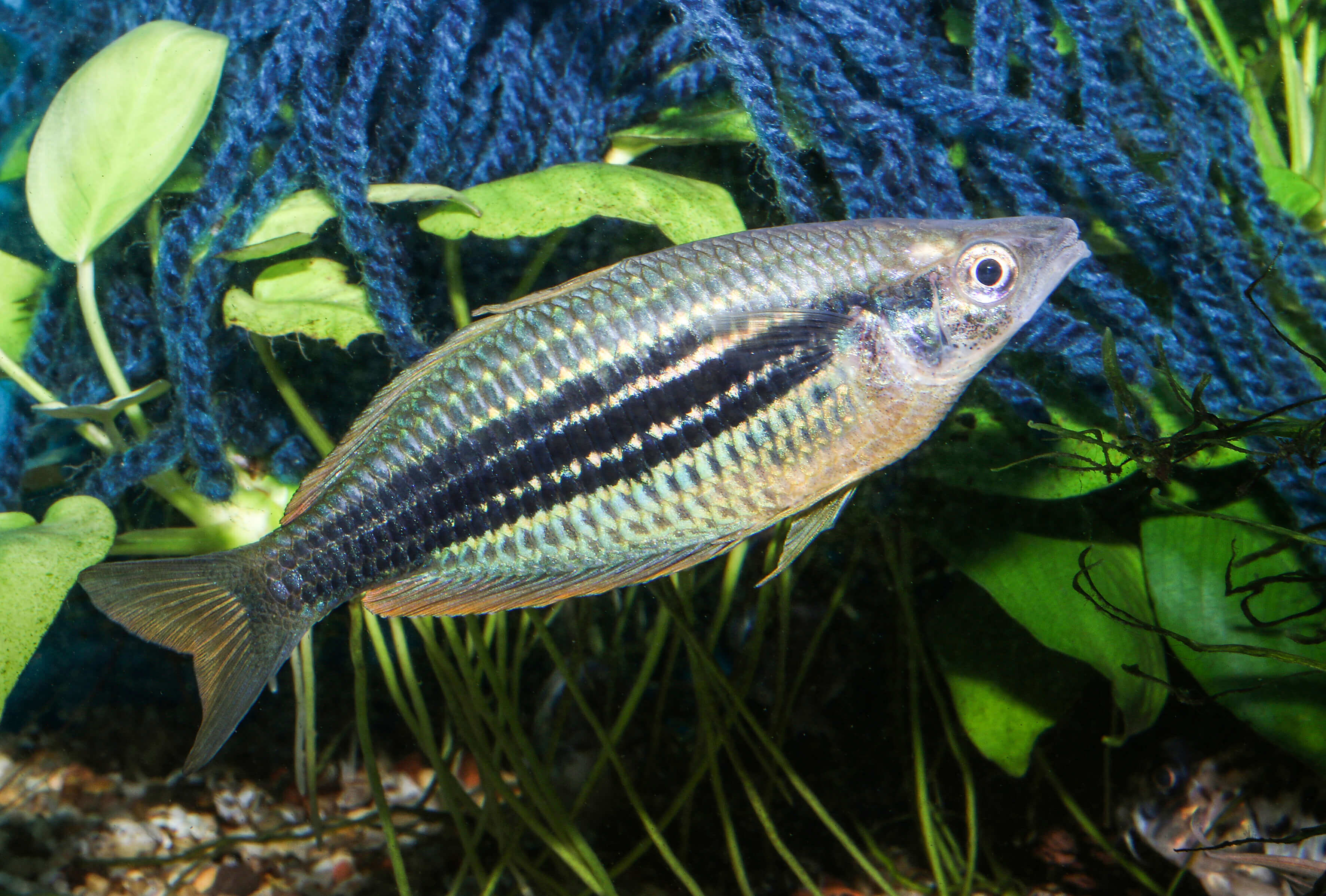 "Lengguru" is the name of the iridescent form of M. ammeri.
"Lengguru" is the name of the iridescent form of M. ammeri.
If you are interested in such animals, you should consider a membership in the International Society for Rainbowfishes (www.irg-online.de). There you can get contact to breeders of the above mentioned and many other rarities besides four issues of the magazine "Regenbogenfisch" every year.
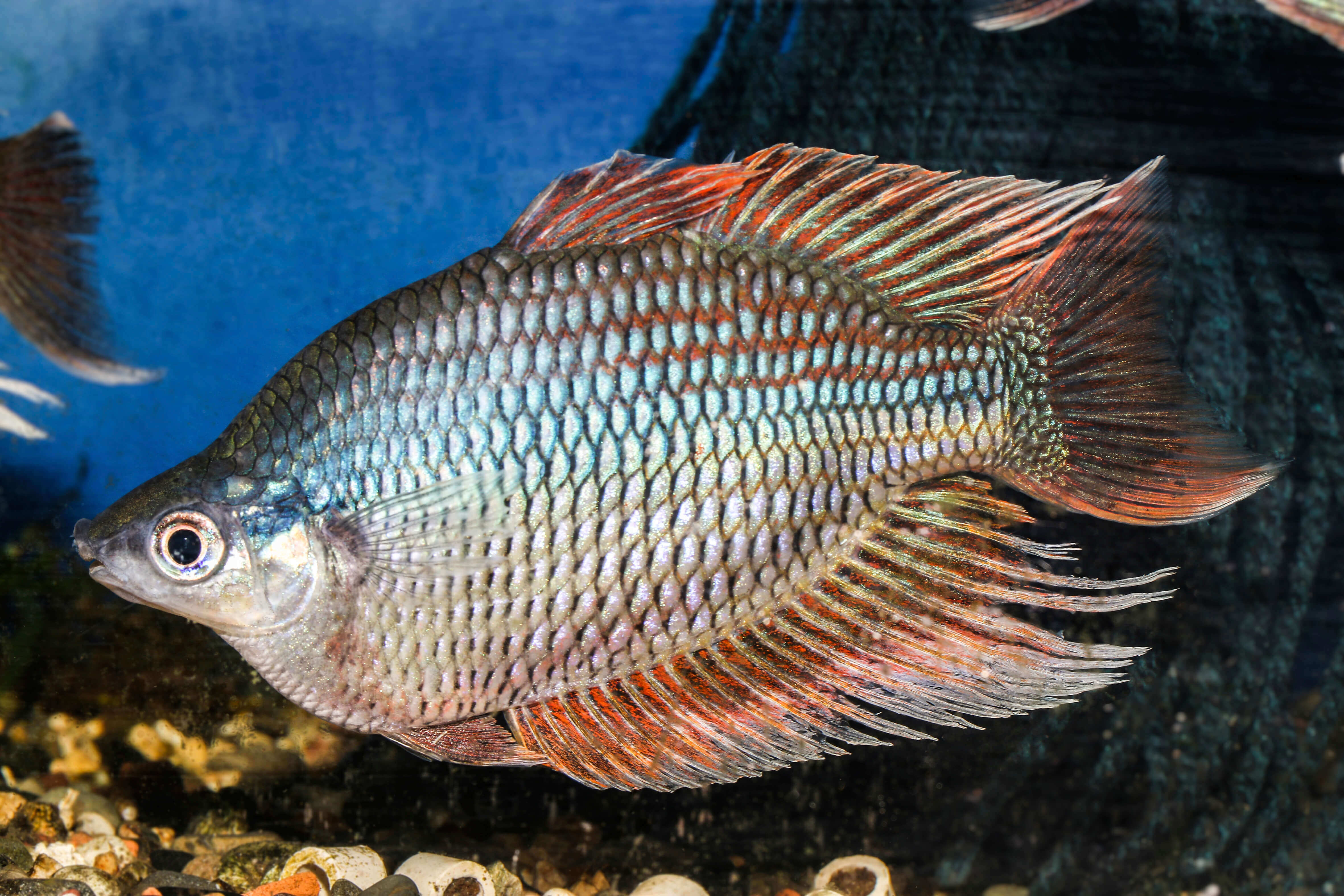 Something completely different with the high back and huge fins is the species M. rubrostriata "Kavor Village".
Something completely different with the high back and huge fins is the species M. rubrostriata "Kavor Village".
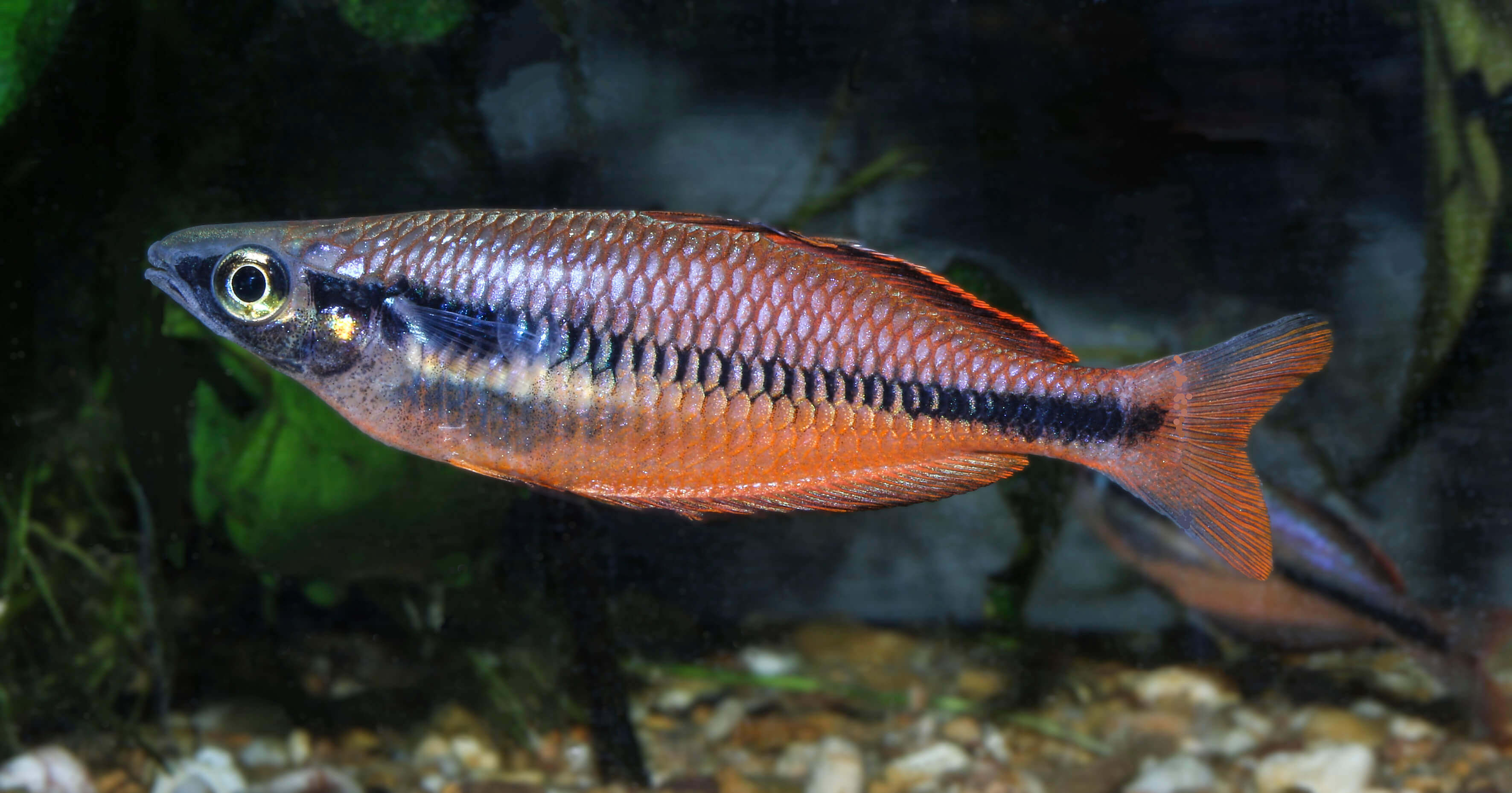 Melanotaenia sp. "Kali Moysi" comes from a varied group of species from the Vogelkop Peninsula.
Melanotaenia sp. "Kali Moysi" comes from a varied group of species from the Vogelkop Peninsula.
Text & photos: Johannes Graf

